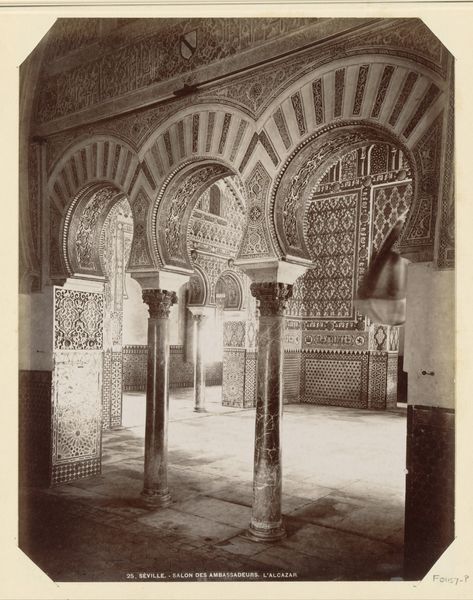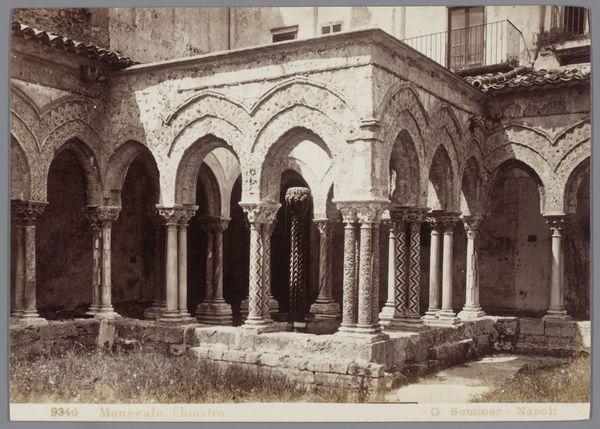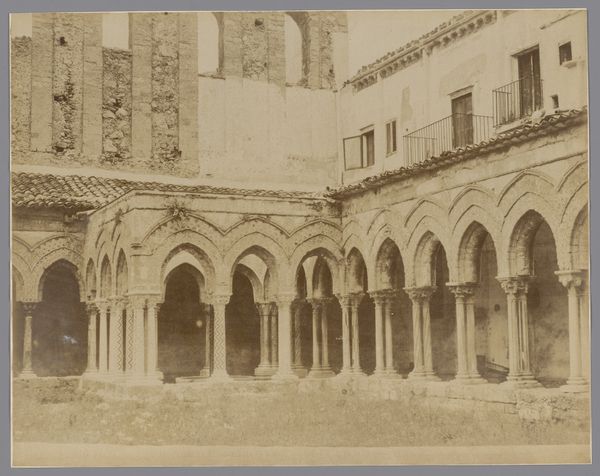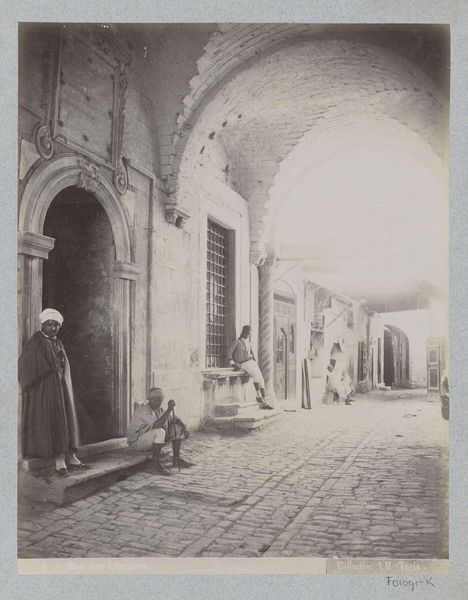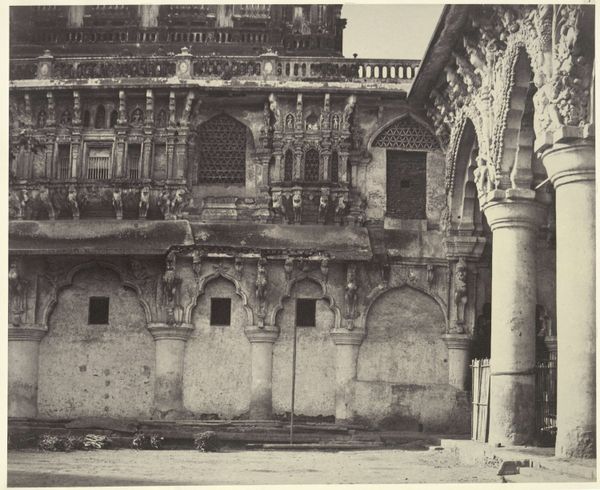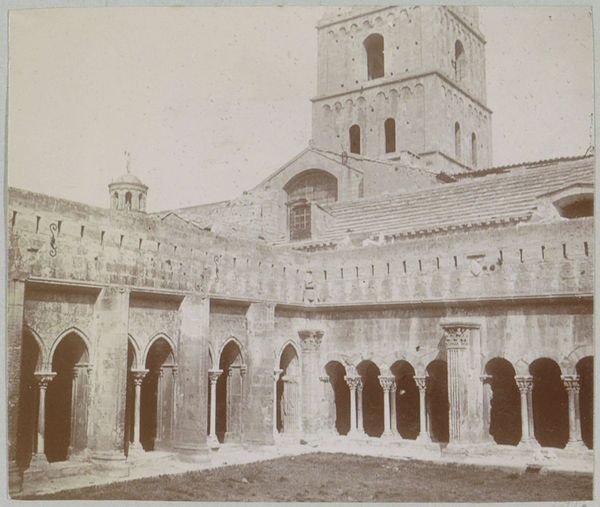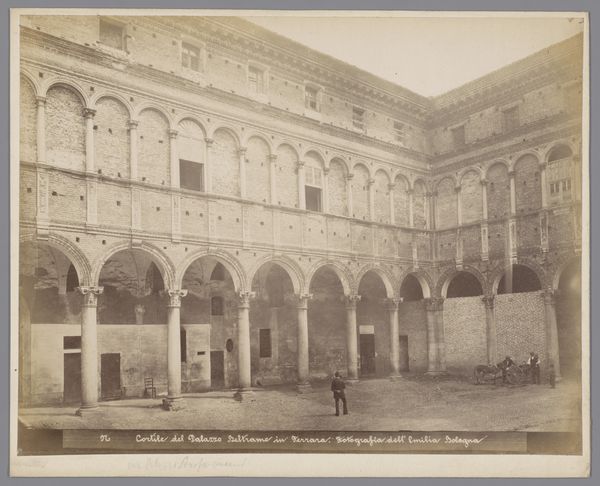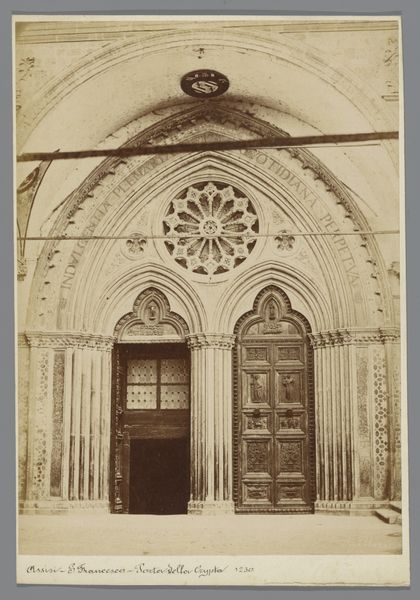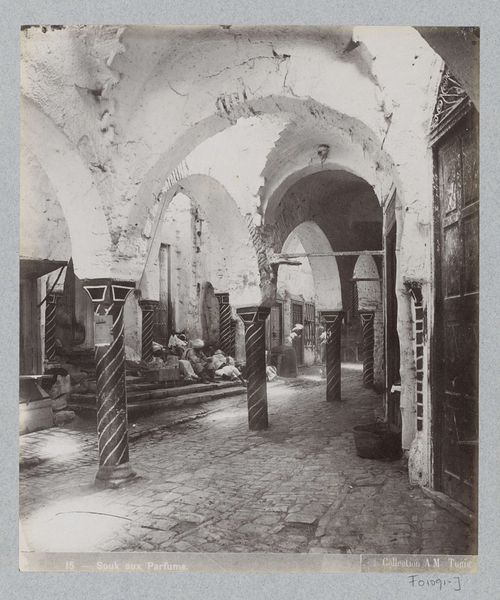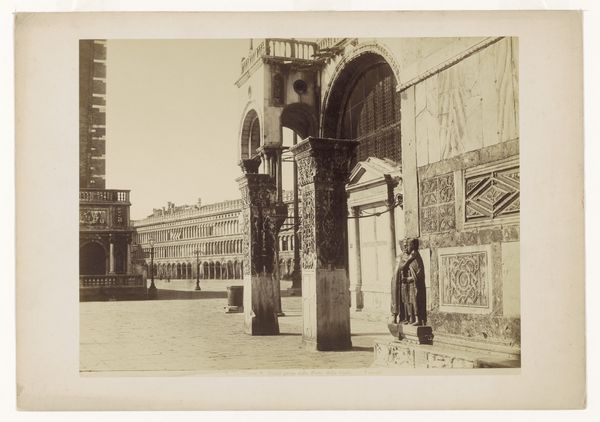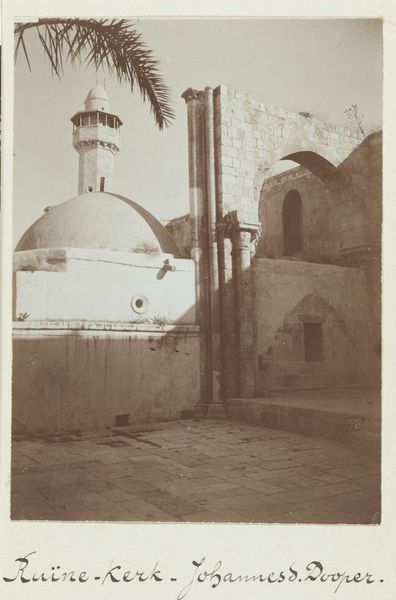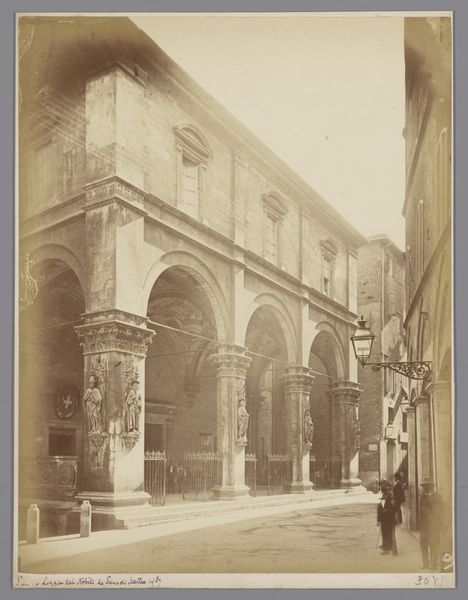
#
photo of handprinted image
#
aged paper
#
muted colour palette
#
photo restoration
#
colourisation
#
historical photography
#
carved into stone
#
19th century
#
watercolor
#
historical font
Dimensions: height 82 mm, width 109 mm
Copyright: Rijks Museum: Open Domain
Curator: Before us, we have Johannes Lodewijk Heldring's 1898 photograph, "Interieur van een moskee in het Qarafa in Caïro." Editor: Immediately, I’m struck by the photograph’s somber tone and spacious emptiness. There’s such grandeur here, but also a desolate quality. Curator: Indeed. The architectural details themselves are potent symbols. Note the arches—recurring motifs that speak to transcendence and the bridge between the earthly and divine realms. The geometry here creates a profound sense of harmony. Editor: And those materials! Look at the texture of the stone. You can practically feel the weight and age. I'm interested in the labour involved, quarrying, transporting, and then carefully carving such intricate ornamentation. The physical exertion to create a place of serenity, the workers likely anonymous. Curator: Absolutely. And the calligraphic bands! In Islam, calligraphy is more than just writing, it's a sacred art form embodying the word of God. Its presence invites contemplation of divine text. Editor: Thinking about Heldring making this image in 1898… He’s consuming an exoticized vision and commodifying it for a European audience. What processes did he employ to capture this image, and who helped him with the image's production? Curator: A fair point, especially when considering how European audiences viewed the East then. Photography itself changed perceptions of truth, documenting distant lands. Though, this specific photograph seems muted; a romantic aesthetic is more prevalent than any colonial ambition. Editor: Perhaps. But that romance itself has economic and social roots. Someone purchased it, someone curated it for an album… These ownership acts become essential. This muted image itself can suggest the desert climate's role in the deterioration of materials. Curator: That adds another layer: The inevitable entropic effect of time! We return to symbolic layers; how architectural forms endure yet fade as cultural meanings transform. Editor: Exactly! Art-making processes have tangible effects across time. Curator: This photographic image reveals how different perspectives illuminate material existence through the lens of symbolism and historical context. Editor: By examining the materials, manufacture and reception, even historical documents themselves gain renewed meaning.
Comments
No comments
Be the first to comment and join the conversation on the ultimate creative platform.
